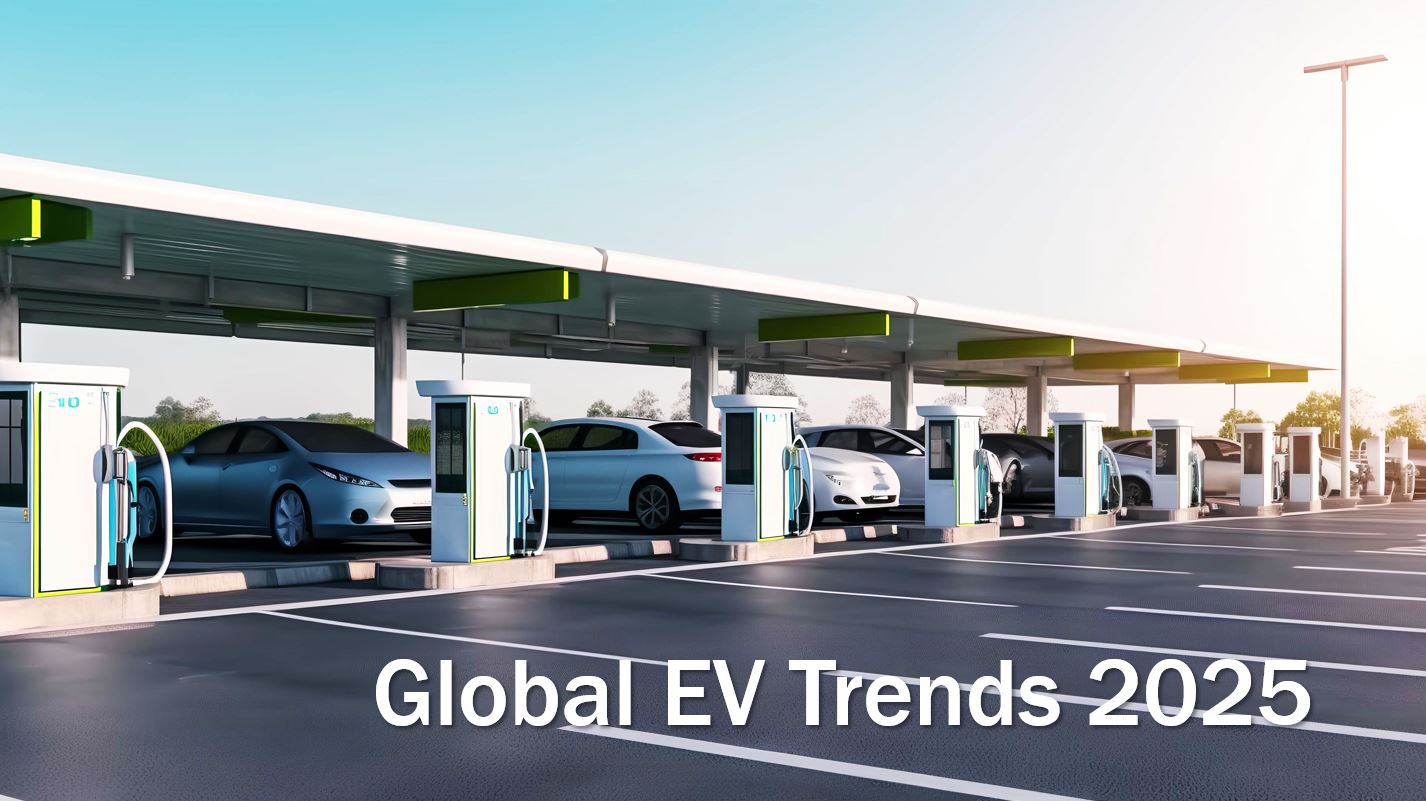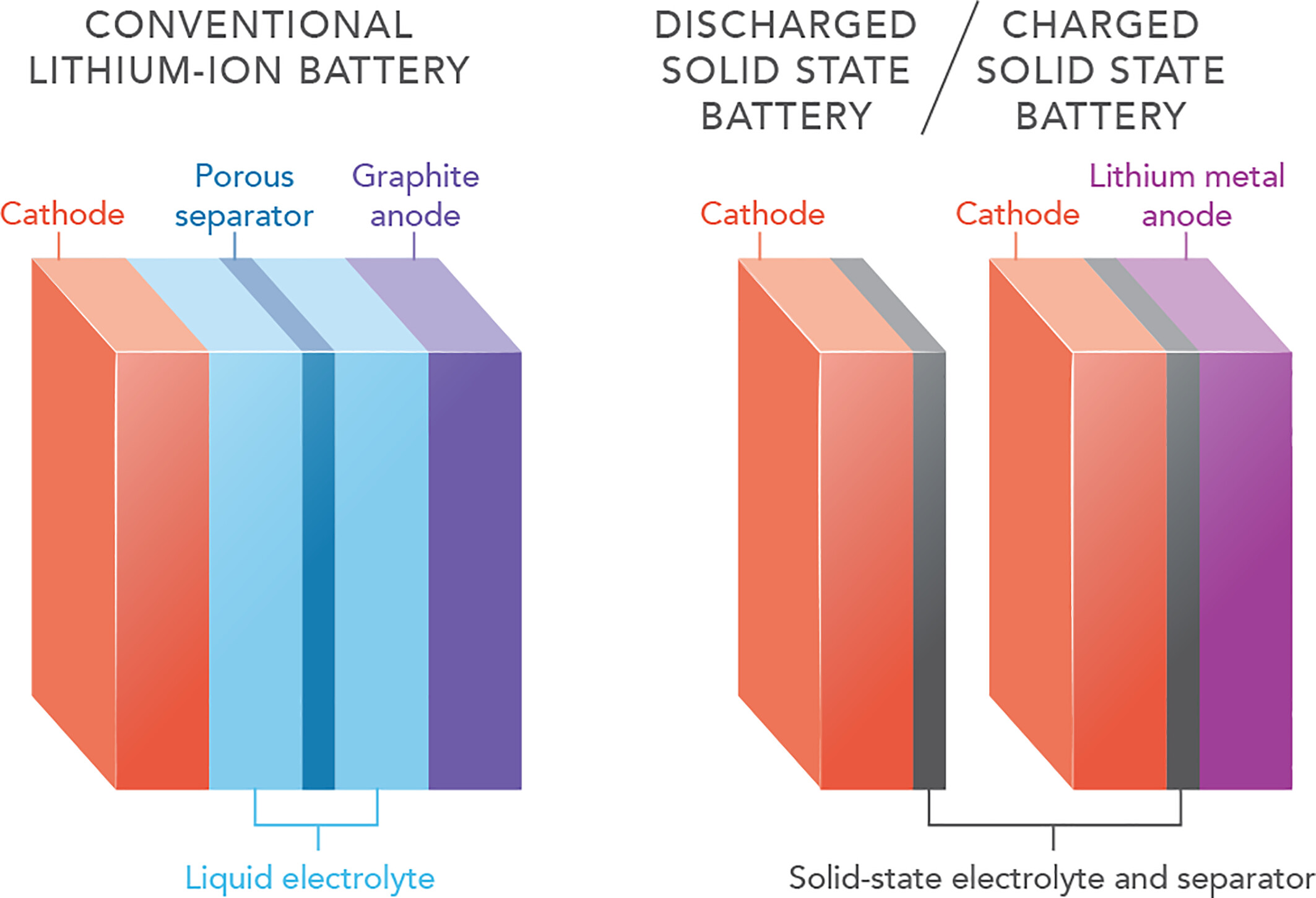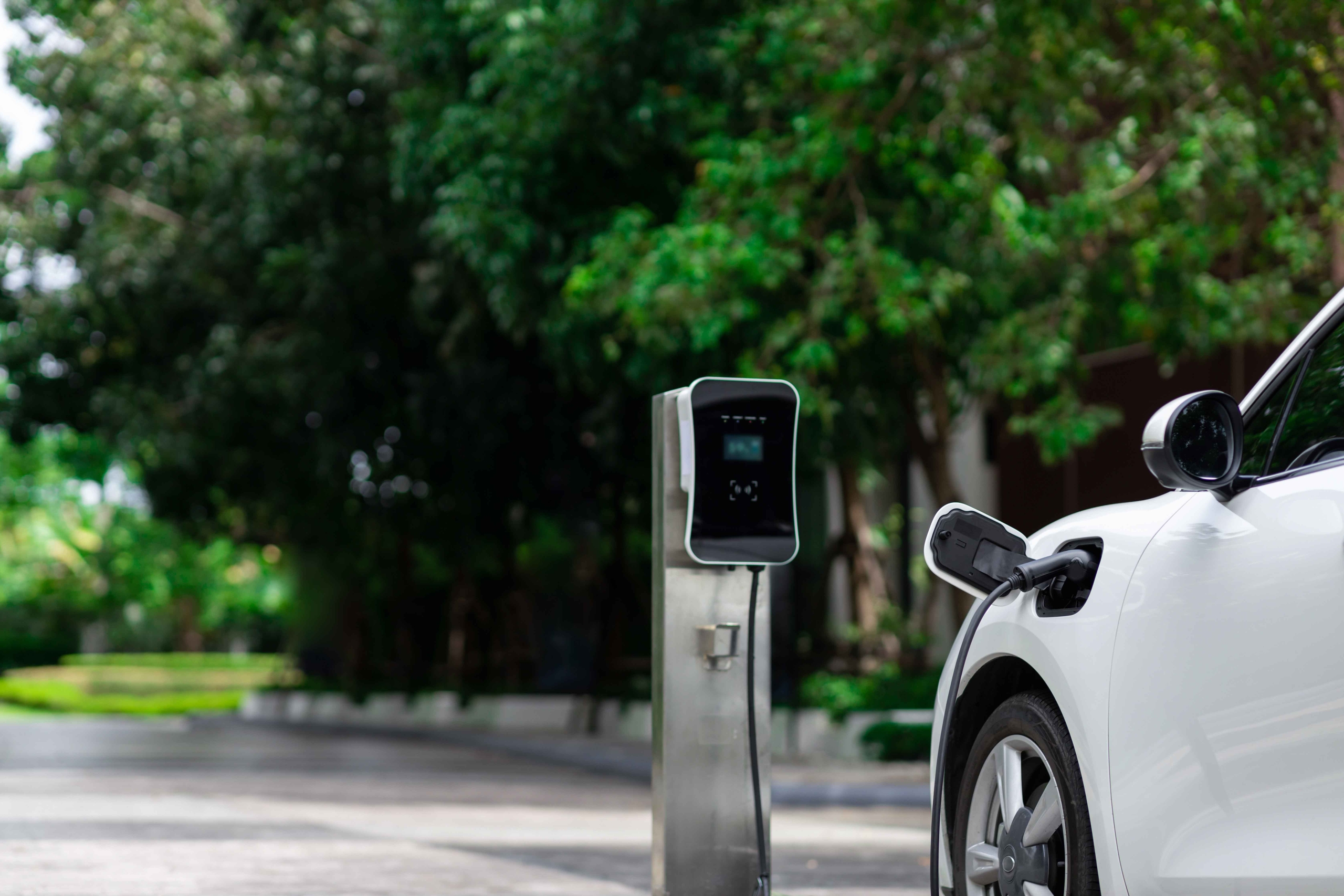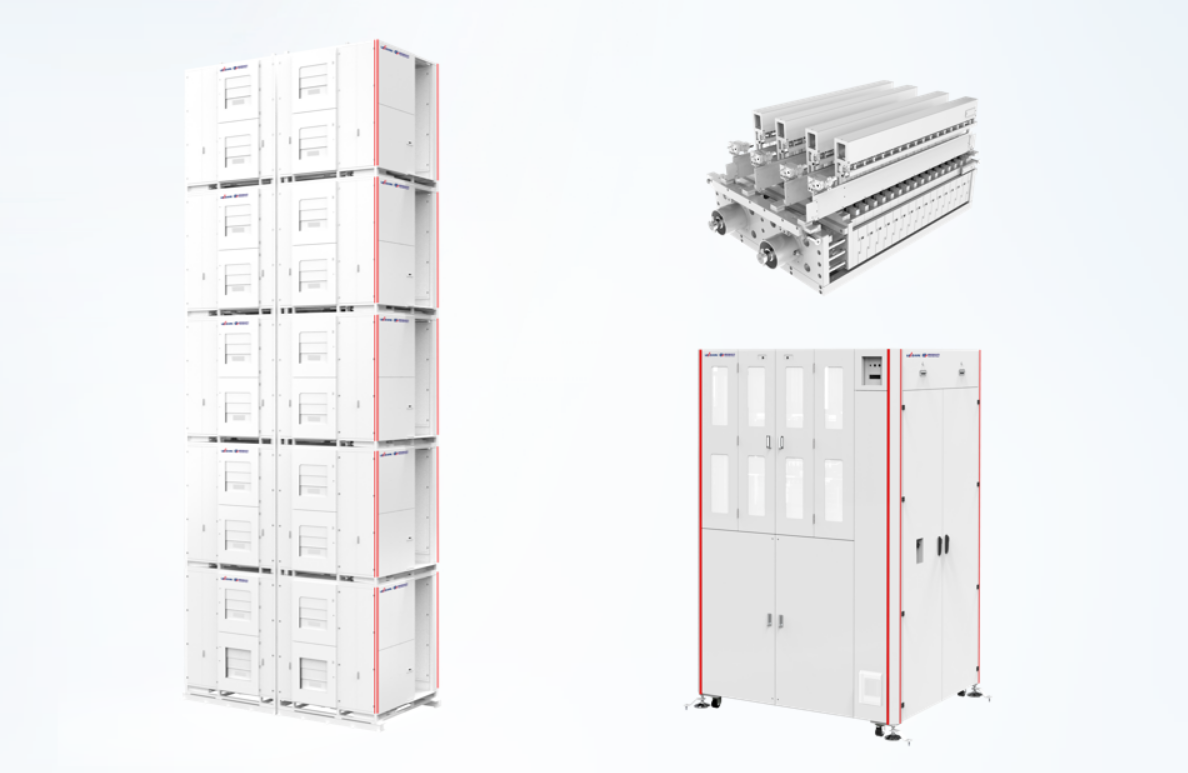
The previous article highlighted that global electric vehicle (EV) sales surged by 25%, reaching a record-breaking 17.1 million units in 2024.
This remarkable growth was fueled by advancements in battery technology, expanded charging networks, and strong government incentives.
As EV trends continue to evolve, 2025 is set to be another transformative year, bringing both new challenges and opportunities. Governments, automakers, and consumers are collaborating to reduce carbon emissions and accelerate sustainable mobility.
This article explores the most important global EV trends, along with key developments, challenges, and opportunities in the EV sector. Looking ahead, here are the top EV trends to watch:
Solid-State Battery Technology Advancements
One of the key EV trends in 2025 is the continued adoption and development of solid-state batteries. Unlike traditional lithium-ion batteries, these advanced batteries use a solid electrolyte instead of a liquid one, offering numerous benefits such as higher energy density, faster charging times, and enhanced safety.
Leading automakers like Toyota, BMW, and Volkswagen are actively developing solid-state batteries, with plans to commercialize the technology by 2025. This innovation could significantly improve EV performance and increase consumer appeal.

Solid-state batteries use a solid material as the electrolyte, which enables ions to move between the battery’s positive end (cathode) and negative end (anode). In contrast, traditional lithium-ion batteries use liquid electrolytes. | Source: PNAS | Image credit: Lucy Reading-Ikkanda (artist).
EV Battery Prices to Drop 50% by 2026
A dramatic reduction in EV battery prices is on the horizon, driven by technological advancements and scaled-up production. According to a Goldman Sachs report, EV battery prices are expected to fall by nearly 50% by 2026.
At the pack level, global average battery prices decreased from USD 153 per kWh in 2022 to USD 149 per kWh in 2023. Analysts predict further declines, reaching USD 80 per kWh by 2026. This significant drop in battery costs will substantially lower the price of electric vehicles, making them more affordable and accessible to a wider range of consumers.
Global EV Sales Projected to Reach 85 Million
Gartner, Inc. forecasts that by the end of 2025, there will be 85 million EVs in use globally, including cars, buses, vans, and heavy trucks. Notably, 73% of these are expected to be battery electric vehicles (BEVs), marking a 35% increase from 2024.
On the other hand, plug-in hybrid electric vehicles (PHEVs), although growing more slowly, are projected to reach 23 million units by 2025, reflecting a 28% increase compared to 2024. Despite some challenges in the EV sector, strong growth is anticipated, particularly in key markets such as China and Europe.
EVs Are Getting Smaller & More Affordable for Consumers
The increasing competition among automakers and growing consumer demand are driving down EV prices. For example, in China, approximately 60% of EVs sold in 2024 were priced below their internal combustion engine (ICE) counterparts.
Similarly, in India, Tata Motors has introduced electric car models priced under USD 15,000. Likewise, Vietnamese automaker VinFast has launched a mini electric SUV priced below USD 13,000.
This trend highlights a global shift toward producing smaller, more affordable EVs, making them accessible to a broader range of consumers.
Public EV Charging Stations on the Rise
The adoption of ultra-fast charging technology is a critical factor in accelerating EV adoption. Emerging technologies now enable EVs to charge up to 80% in just 10–20 minutes, and companies continue to innovate to reduce charging times further.
The International Energy Agency (IEA) projects that the global number of public charging points will surpass 15 million by 2030, a four-fold increase from the 4 million operational in 2023. According to The Business Research Company, the EV charging stations market is expected to grow from $9.56 billion in 2024 to $12.44 billion in 2025, at a compound annual growth rate (CAGR) of 30.2%.
Home EV Charging Stations Gain Popularity
As EV ownership grows, one of the key trends is the increasing demand for home charging stations. In 2025, companies are expected to launch faster and more efficient home chargers that can fully charge an EV overnight, providing convenience for owners and reducing reliance on public charging infrastructure.
Additionally, residential real estate developers are embracing this trend by integrating home EV chargers as a standard feature, recognizing their importance to prospective buyers.

Expansion of Zero-Emission Zones
Implementing zero-emission zones (ZEZs) offers multiple benefits beyond reducing air pollution. As one of the key EV trends, these zones help decrease traffic congestion by limiting the number of conventional vehicles in city centers, thus encouraging the use of public transportation, cycling, and walking.
Currently, 36 cities are participating in the Zero Emission Area Programme with C40. In addition, the clean transport group Clean Cities has identified 35 cities that have committed to phasing in zero-emission zones for freight before Europe’s first ZEZs take effect in 2025.
Consequently, ZEZs are also driving demand for zero-emission vehicles, as businesses and residents adapt to the new regulations. This shift aligns with broader EV trends, which emphasize sustainable urban mobility and the transition to cleaner transportation.
The Electrification of Trucks and Buses
The electrification of heavy-duty vehicles and urban buses is accelerating, with significant growth expected in Europe, North America, and China. According to PricewaterhouseCoopers’ (PwC) “Truck Study 2024,” over 20% of transportation in these regions is projected to be electrified by 2030.
The study categorizes the global truck market into six primary use cases: long-haul, line-haul, special applications, coach, urban transport, and distribution. Among these, long-haul and urban transport contribute the most to emissions reduction.
As a result, leading electric truck manufacturers, including Tesla, Volvo Group, BYD Co. Ltd., Daimler Truck AG, Beiqi Foton Motor Co. Ltd., and Nikola Corporation, are driving this transformation. These companies are actively expanding their battery-electric truck platforms, which will play a pivotal role in advancing e-mobility.
Battery Recycling Technologies
According to a Statista report, in 2020, EV battery recycling companies processed an estimated 250 kilotons of batteries worldwide. This figure will likely increase more than sevenfold by 2030, as more batteries reach the end of their lifespan and manufacturers ramp up production to meet rising demand. By 2040, analysts forecast that recycling facilities will process over 20 million tons of EV batteries.
Market analysts project that the global EV battery recycling industry will grow to USD 22.2 billion by 2032, expanding at a CAGR of 24.9% between 2024 and 2032. This rapid expansion highlights the urgent need for sustainable recycling practices to manage end-of-life batteries and support new battery production.
Increased EV Adoption in Emerging Markets
Emerging markets such as India, Brazil, and Southeast Asia are witnessing accelerated EV adoption. Supportive government policies, rising consumer awareness of sustainability, and declining EV prices are driving this growth.
In China, India, and Vietnam, EVs are being sold at competitive prices ranging from USD 13,000 to USD 15,000. Additionally, electric two- and three-wheeled vehicles (2/3Ws) are particularly popular in these regions, offering affordable and sustainable mobility solutions.

3-wheeled vehicles in India | Source: Lord’s Automative Pvt. Ltd.
Autonomous Electric Vehicles
Autonomous electric vehicles (EVs) are expected to play an increasingly prominent role in the automotive sector. Specifically, these vehicles range from partially autonomous systems, such as autopilot features, to fully self-driving technologies.
Moreover, autonomous EVs are particularly suited for shared mobility services like car-sharing and ride-hailing platforms. For instance, companies such as Waymo (a Google subsidiary) and Cruise (owned by General Motors) are actively testing autonomous EVs, with plans for commercial deployment this year.
This comprehensive outlook for 2025 and beyond underscores the dynamic nature of the EV industry, aligning market demand, policies, innovation, and sustainability to successfully redefine global e-mobility.
Conclusion
2025 promises to be a pivotal year for the EV industry, with governments worldwide expected to enhance pro-EV incentives, address persistent supply chain challenges, and bridge critical gaps in EV technologies and infrastructure. These collective efforts will play a vital role in ensuring the sustained growth and success of the EV sector.
As the world transitions to 2025, the question is no longer whether EVs will dominate global transportation, but how swiftly and effectively they can become the standard for mobility. Market competition will continue to drive down electric vehicle prices, making EVs increasingly accessible to the mass market.
Cheaper electric vehicles will play a pivotal role in unlocking widespread adoption, paving the way for a more sustainable future.
Analysts project that 2025 will be a crucial year for the industry, bringing us closer to achieving net-zero emissions targets. The continued evolution of the EV sector signals an exciting step forward in the journey toward cleaner, more efficient transportation solutions.
Staying Ahead of 2025 EV Trends Through Partnerships
For insights into EV manufacturing solutions, explore how Lead Intelligent Equipment (LEAD) can help drive innovation and efficiency in your projects. With expertise in advanced technologies and turnkey solutions, Lead is your trusted partner for navigating the dynamic EV landscape.
As the EV industry gears up for 2025 and beyond, LEAD can support your manufacturing journey with advanced turnkey solutions and cutting-edge technologies. From battery innovation to production line integration, we provide the tools and expertise needed to accelerate your success. Contact us to discover how we can drive the future of electric mobility together.
Sources
- https://www.pnas.org/doi/10.1073/pnas.2425219121
- https://www.iea.org/reports/global-ev-outlook-2024/outlook-for-electric-vehicle-charging-infrastructure
- https://www.thebusinessresearchcompany.com/report/electric-vehicle-charging-stations-global-market-report
- https://www.goldmansachs.com/insights/articles/electric-vehicle-battery-prices-are-expected-to-fall-almost-50-percent-by-2025
- https://www.wri.org/insights/zero-emission-zones-lessons-cities
- https://www.gov.uk/government/news/pathway-for-zero-emission-vehicle-transition-by-2035-becomes-law
- https://www.strategyand.pwc.com/de/en/industries/transport/truck-study.html
- https://www.imarcgroup.com/top-electric-vehicle-battery-recycling-companies
- https://www.statista.com/statistics/1415407/ev-battery-recycling-supply-worldwide/
- https://www.conference-board.org/publications/India-electric-vehicle-insights
- https://www.forrester.com/blogs/forresters-green-consumer-segmentation-for-2025/
- https://www.iotworldtoday.com/transportation-logistics/autonomous-vehicles-the-outlook-for-2025
- https://www.autopilotreview.com/cars-with-autopilot-self-driving/
- https://www.iea.org/commentaries/cheaper-electric-cars-the-key-to-unlocking-mass-market-adoption
- https://www.virta.global/blog/the-year-of-the-ev-what-2025-holds-for-electric-vehicles-and-emobility
- https://evmagazine.com/self-drive/waymo-cruise-reimagine-public-autonomous-transport
- https://lordsauto.com/
- https://cities-today.com/thirty-five-cities-to-introduce-zero-emission-freight-zones/
- https://www.c40.org/what-we-do/scaling-up-climate-action/transportation/zero-emission-area-programme/







